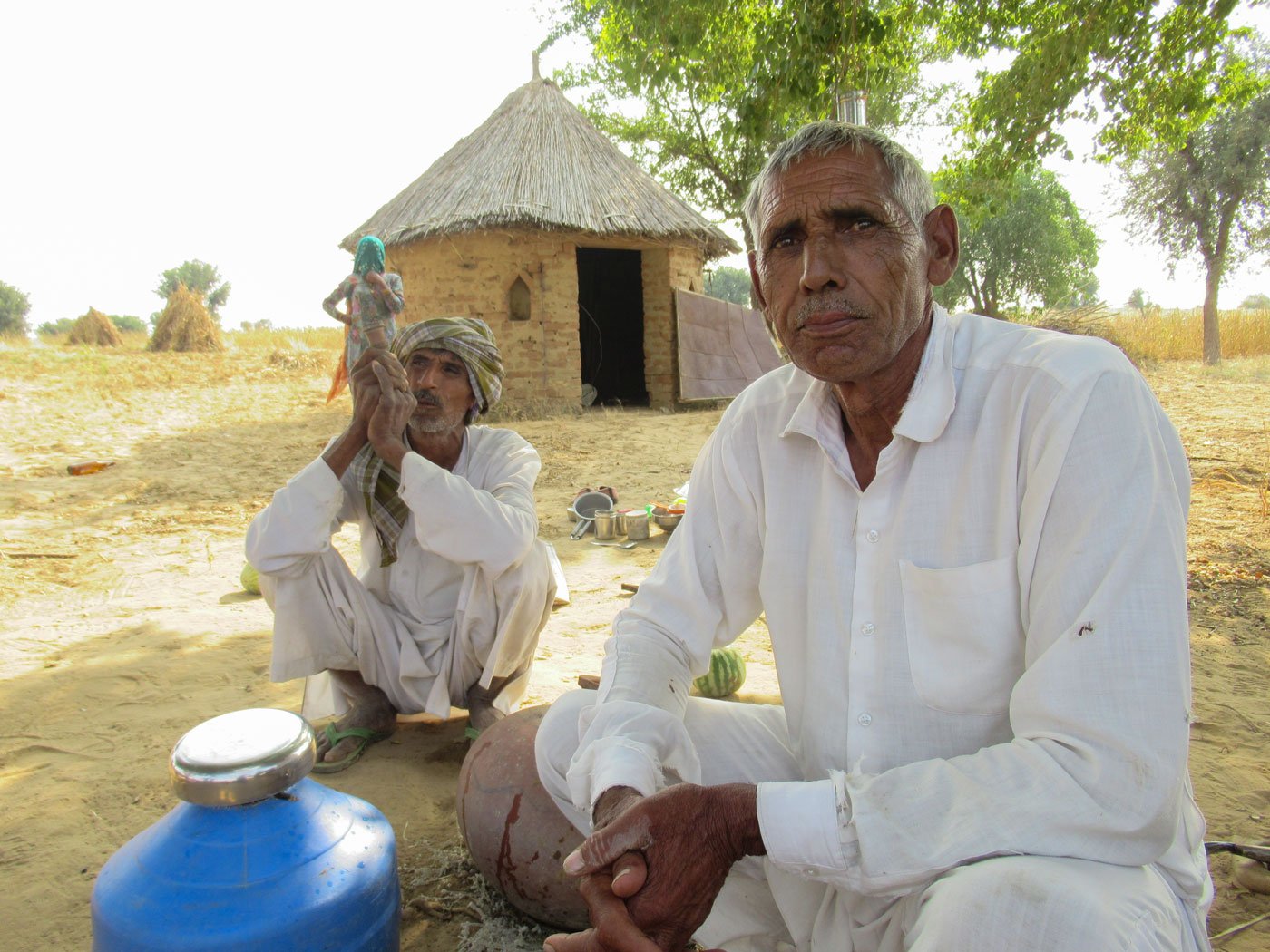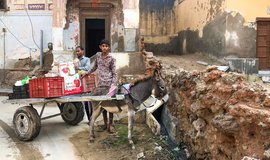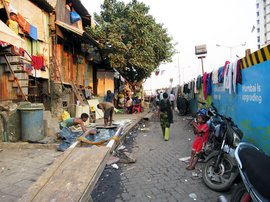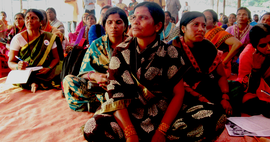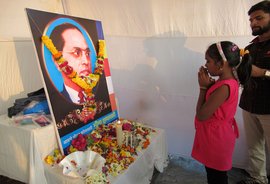“My back has burnt with the heat,” says Bajrang Goswami, sitting on the ground in the sparse shade of a clutch of khejri trees, just outside Gajuvas village. “The heat is up, the harvest is down,” he adds, glancing at the dunes of reaped bajra . A lone camel stands nearby, munching dry grass on the 22 bighas of land he and his wife Raj Kaur cultivate as sharecroppers in Taranagar tehsil of Rajasthan’s Churu district.
“The sun is hot on the head, the sand is hot on the feet,” says Geeta Devi Nayak of Sujangarh tehsil , south of Taranagar. A landless widow, Geeta Devi labours on farmland owned by Bhagwani Devi Choudhary’s family. The two have just completed work for the day around 5 p.m. in Gudawari village. “ Garmi hee garmi pade aaj kal [It’s heat and more heat nowadays] ,” says Bhagwani Devi.
In Churu district of north Rajasthan, where the sandy ground sizzles in the summers and the wind feels like a furnace in May and June, conversations about the heat – and how it is intensifying – are common. Temperatures in those months easily climb up to the high 40s. Just last month, May 2020, the temperature rose to 50 degree Celsius – and was the highest in the world, news reports said, for May 26.
So last year, when the mercury breached even the 51 degrees Celsius mark in Churu in early June 2019 – more than halfway to the boiling point of water – for many it was a sidebar. “I recall it reached 50 degrees around 30 years ago too,” says 75-year-old Hardayalji Singh, a retired schoolteacher and landowner, reclining on a cot in his large house in Gajuvas village.
Six months later, by December-January in some years, Churu has seen just-below zero degrees temperatures. And in February 2020, the India Meteorological Department found the lowest minimum temperature in the plains of India to be in Churu, at 4.1 degrees.
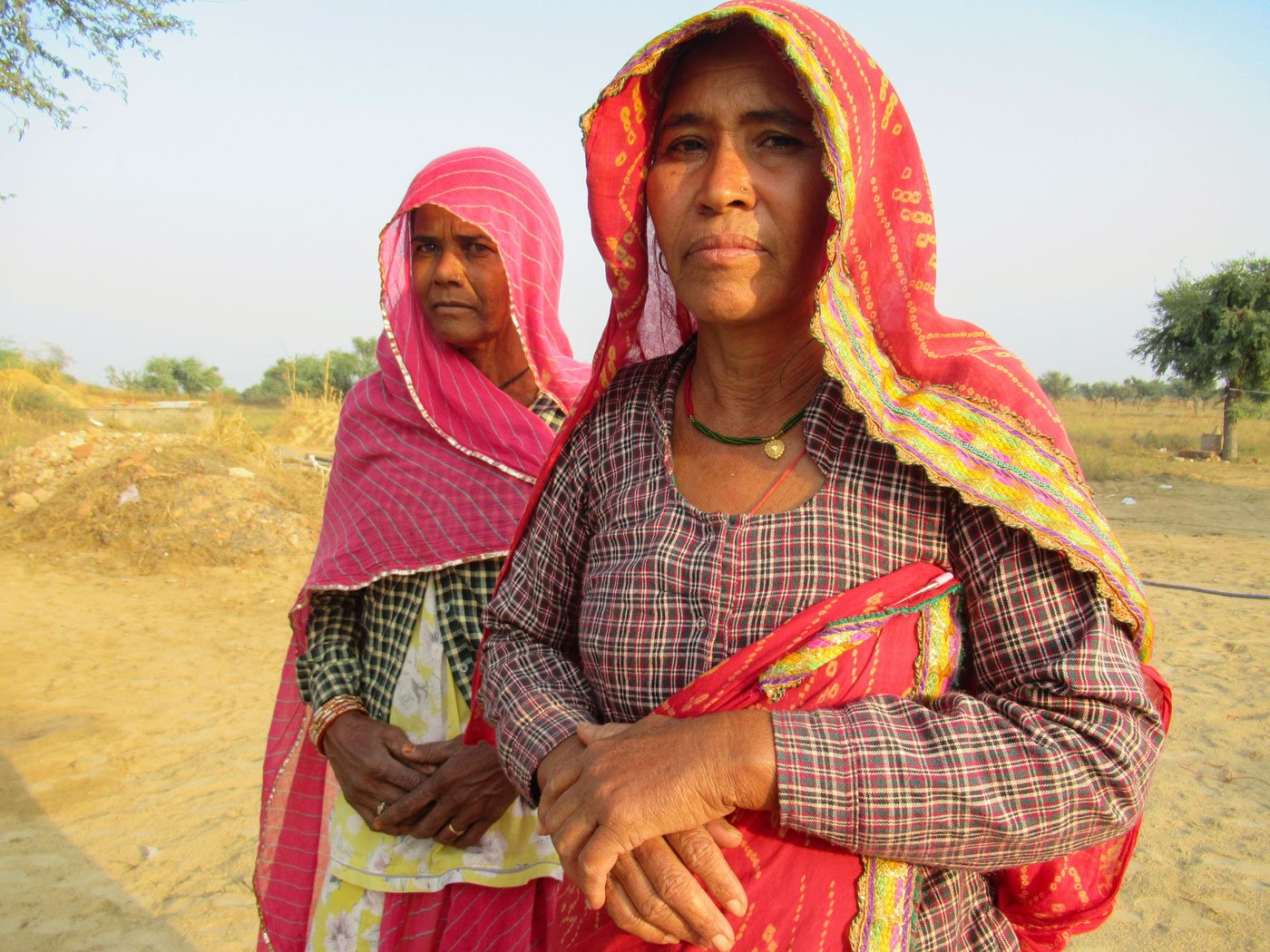
Geeta Devi and Bhagwani Devi of of Sujangarh tehsil , Churu: ' Garmi hee garmi pade aaj kal (I t’s heat and more heat nowadays)'
Across this wide temperature arc – from minus 1 to 51 degrees Celsius – it’s the hotter end that people in the district speak more about. Not the dramatic 50-plus degrees of June 2019 or the 50 degrees of last month, but of a prolonged summer that’s engulfing the other seasons.
“In the past that [blazing heat] would last for a day or two,” says Prof. H. R. Isran, a resident of Churu town and former principal of the S. K. Government College in nearby Sikar district, who many regard as a mentor. “Now such heat extends for many days. The entire summer has expanded.”
In June 2019, recalls Amrita Choudhary, “We could not walk on the road at mid-day, our chappals would stick to the tar.” Still, like the others, Choudhary, who runs Disha Shekhawati, an organisation in Sujangarh town that produces tie-and-dye garments, is more concerned about the deepening of the summer. “Even in this hot region, the heat is increasing as well as starting earlier,” she says.
“The summer has extended by one-and-a-half months,” estimates Bhagwani Devi in Gudawari village. Like her, many in the villages of Churu district speak of how the seasons have shifted – the spreading summer has eaten into the winter weeks after compressing the monsoon months in between – and how the 12 calendar months have got mixed up.
It is these creeping changes in the climate – not that single week of 51 degrees Celsius or a few days of 50 degrees last month – that has them worried.
*****
In 2019, Churu received 369 mm of rain between June 1 and September 30. This was slightly above its usual average of around 314 mm for those monsoon months. All of Rajasthan – India’s largest and driest state, covering 10.4 per cent of the country’s total area – is an arid and semi-arid region, which receives (official data show) annual average rainfall of around 574 mm.
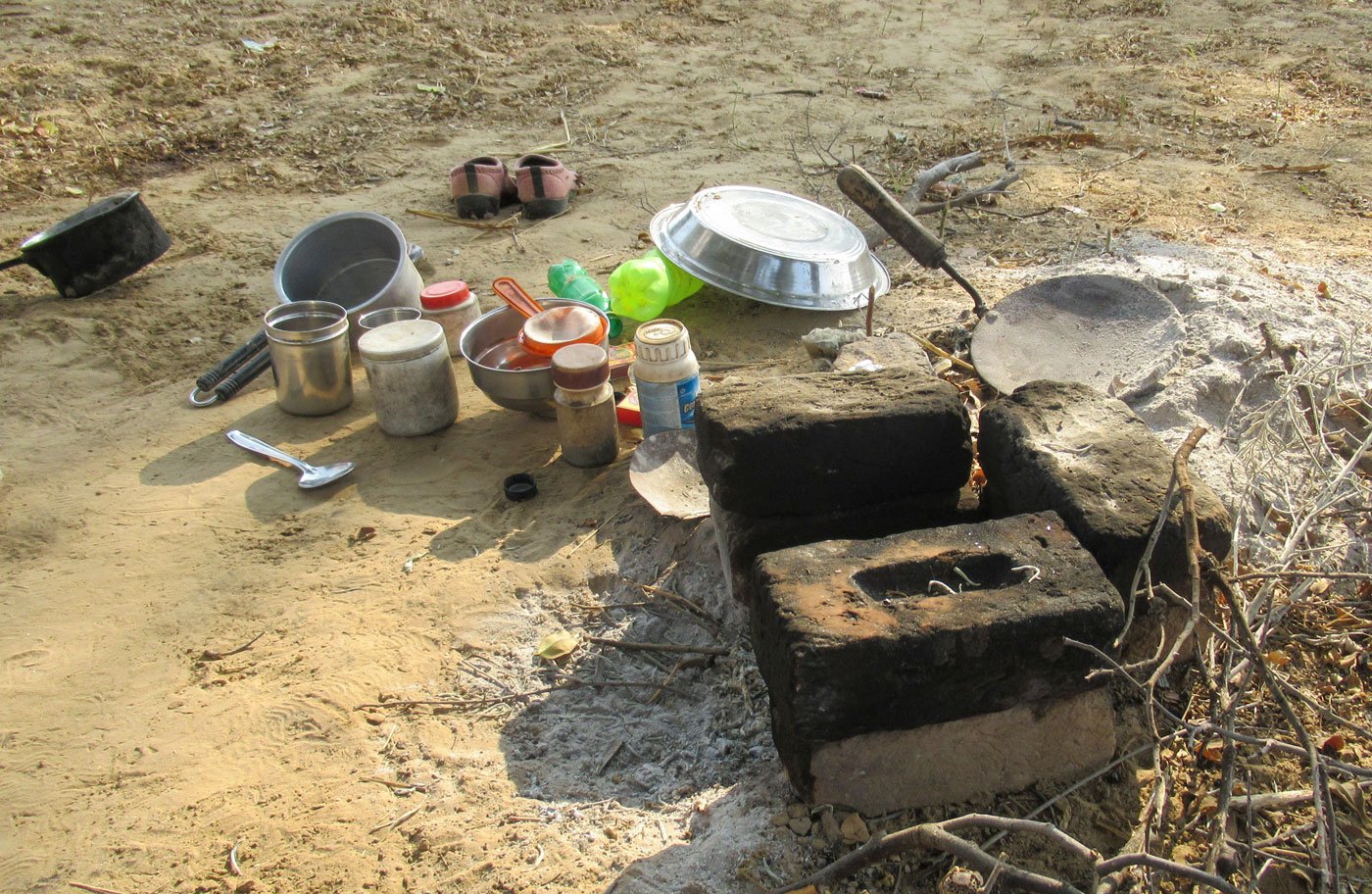
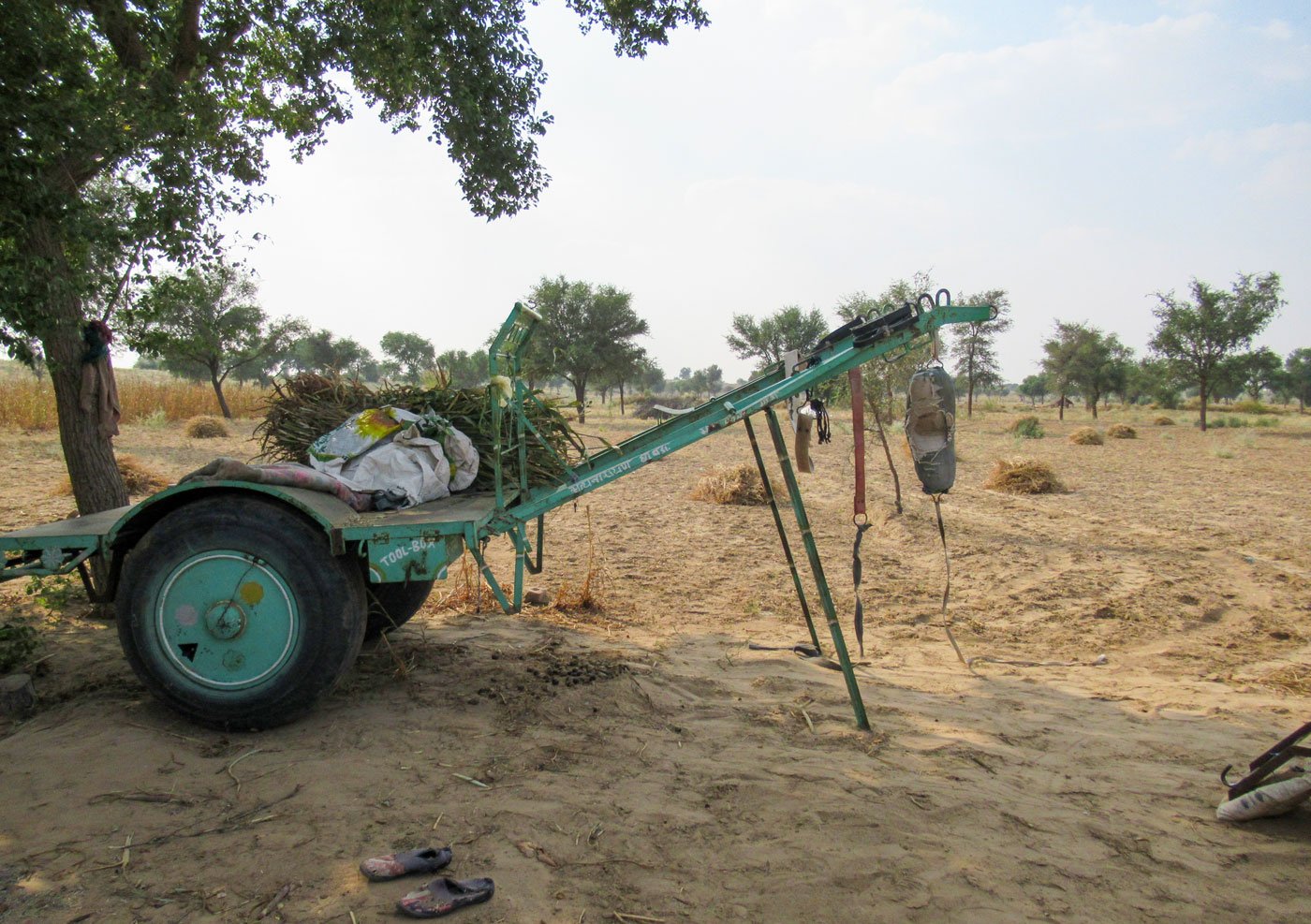
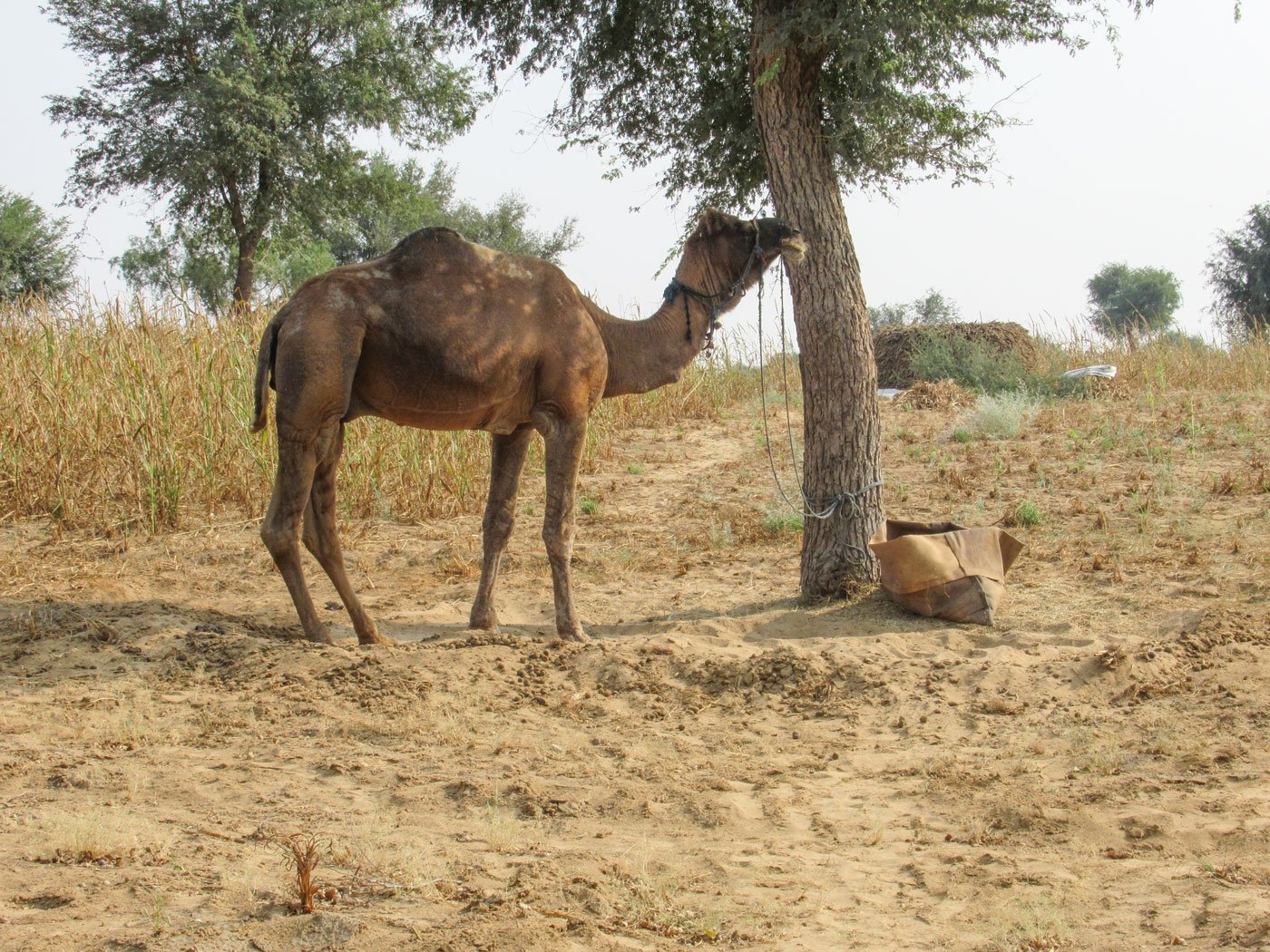
In the fields that Bajrang Goswami and his wife Raj Kaur cultivate as sharecroppers outside Gajuvas village in Taranagar tehsil
For some 75 per cent of the roughly 70 million people who live in Rajasthan's rural areas, farming and livestock-rearing remain the main occupations. In Churu district, 72 per cent of around 2.5 million people live in rural areas – where agriculture is mostly rain-fed.
Over time, many have tried to reduce this dependence on the rains. “Since the 1990s, there have been attempts here to dig borewells [that went 500-600 feet deep], but that’s not been very successful due to [groundwater] salinity,” says Prof. Isran. “For a while, some farmers could harvest a second crop like groundnut [using borewell water]” in the 899 villages of the district’s six tehsils. “But then the land dried up too much and most borewells shut down, except in a few villages.”
About 38 per cent (or 62,94,000 hectares) of Rajasthan’s net sown area is irrigated, says the draft Rajasthan State Action Plan for Climate Change ( RSAPCC , 2010). In Churu, that is barely 8 per cent. While the still-being-completed Choudhary Kumbharam Lift Canal provides water to some of the villages and farms of the district, Churu's agriculture and its four main kharif crops – bajra , moong , moth and gavar beans – remain largely rainfall dependent.
But the rainfall pattern has altered over these past 20 years. People in Churu speak of two broad shifts: the monsoon months have moved, and the rain has become patchy – intense in some places, sparse in others.
Older farmers recall the first robust rains of a different past. “In the month of Ashad [June-July], we would see lightning, knew the rain was coming and would quickly start making rotis in the fields [before moving inside our huts],” says Govardhan Saharan, 59, a farmer from the Jat community, whose joint family holds 180 bighas (around 120 acres) in Gajuvas village. Jats and Choudharys, both OBC communities, are predominant among the farmers of Churu. “Now there is often lightning, but it stops there – there is no rain,” Saharan adds.
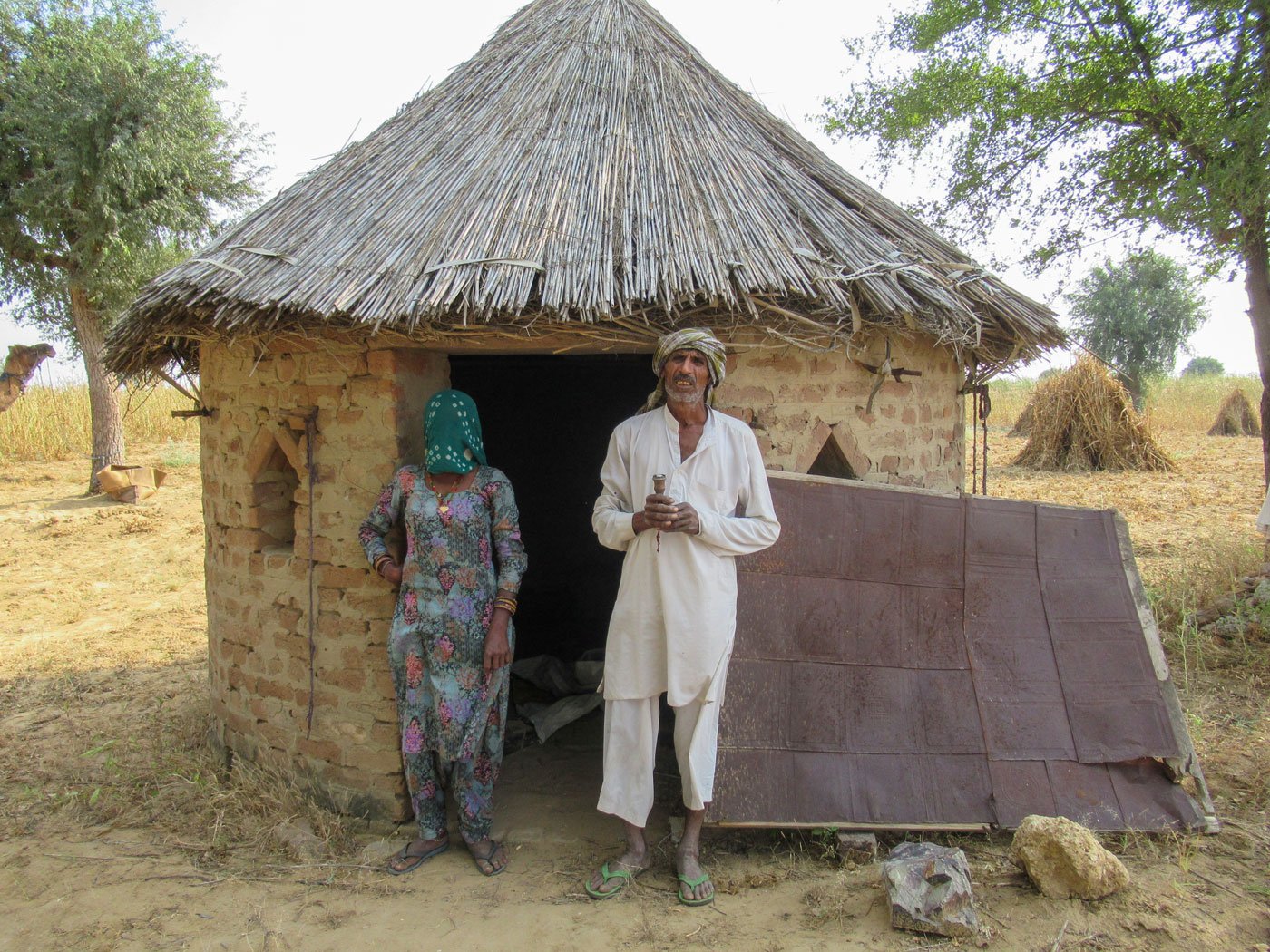
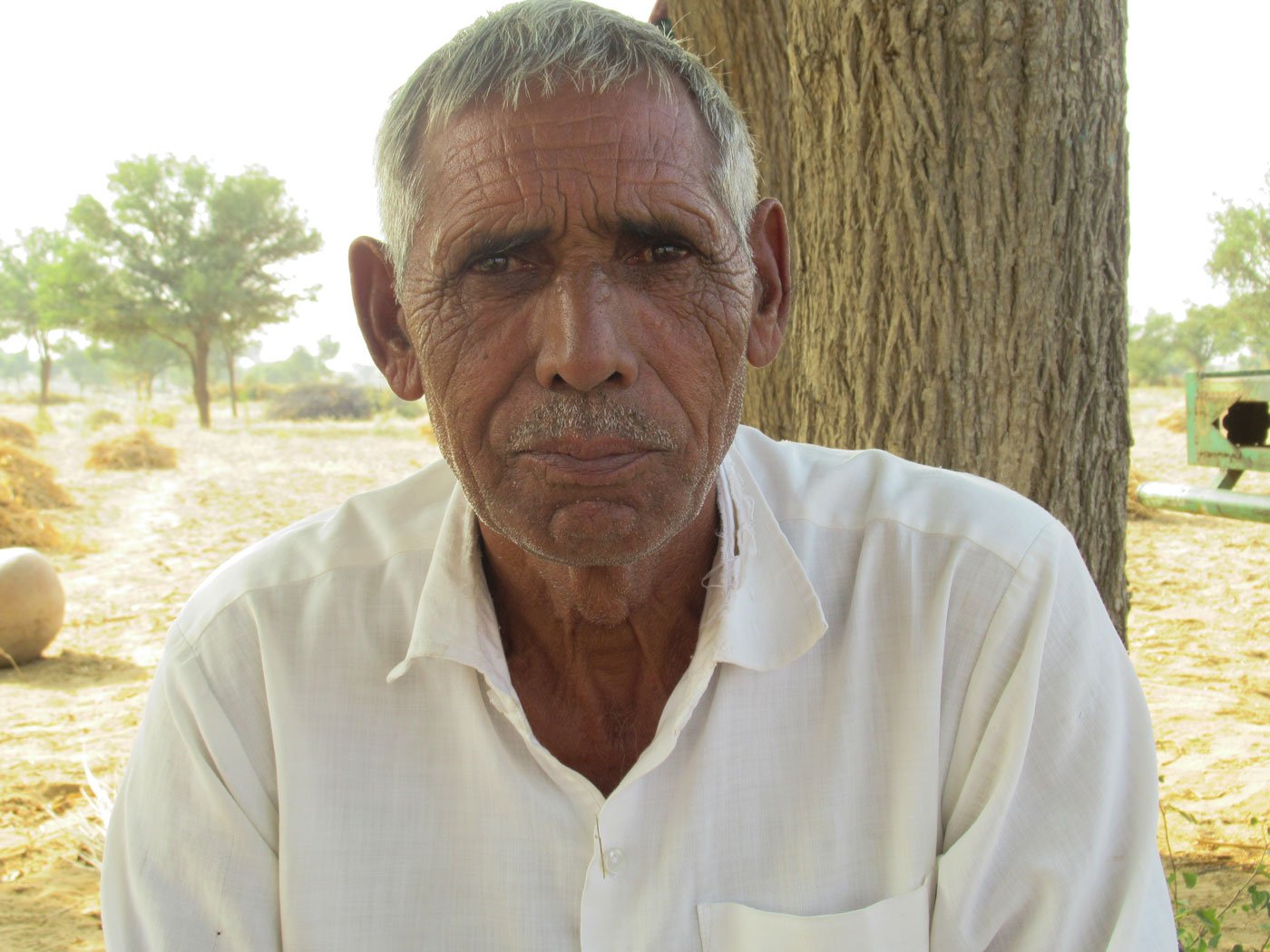
Bajrang Goswami and Raj Kaur (left) say their 'back has burnt with the heat', while older farmers like Govardhan Saharan (right) speak of the first rains of a different past
“When I was in school, with dark clouds looming in the north, we could tell the rain was coming – and it would, in half an hour,” says 80-year-old Narain Prasad of Sadinsar village in neighbouring Sikar district. “Now,” he says, sitting on a cot in his farm, “even if there are clouds, they pass.” Prasad has built a huge concrete tank on his 13- bigha farmland (around 8 acres), for harvesting rainwater. (It was empty in November 2019 when I met him.)
Now, instead of the first rain by June-end, when the bajra would be sowed, regular rainfall starts weeks later and at times stops even a month earlier, by the end of August, farmers here say.
That makes sowing plans and schedules difficult. “In my nana ’s time, they knew about the winds, position of stars, birdsong – and would make farming decisions based on that,” says Amrita Choudhary.
“Now that entire system is broken,” says writer-farmer Dularam Saharan, summing it up simply. Saharan’s joint family cultivates around 200 bighas in Bharang village of Tarangar block.
Besides the monsoon arriving late and leaving early, the intensity of the rainfall has reduced, even if the annual average is fairly steady. “Now the force of the rain is less,” says Dharampal Saharan, who cultivates 12 bighas in Gajuvas. “It comes, doesn’t come, no one knows.” And rainfall dispersal is erratic. “Even in one part of the field it might rain,” says Amrita, “but not in another part of the same field.”
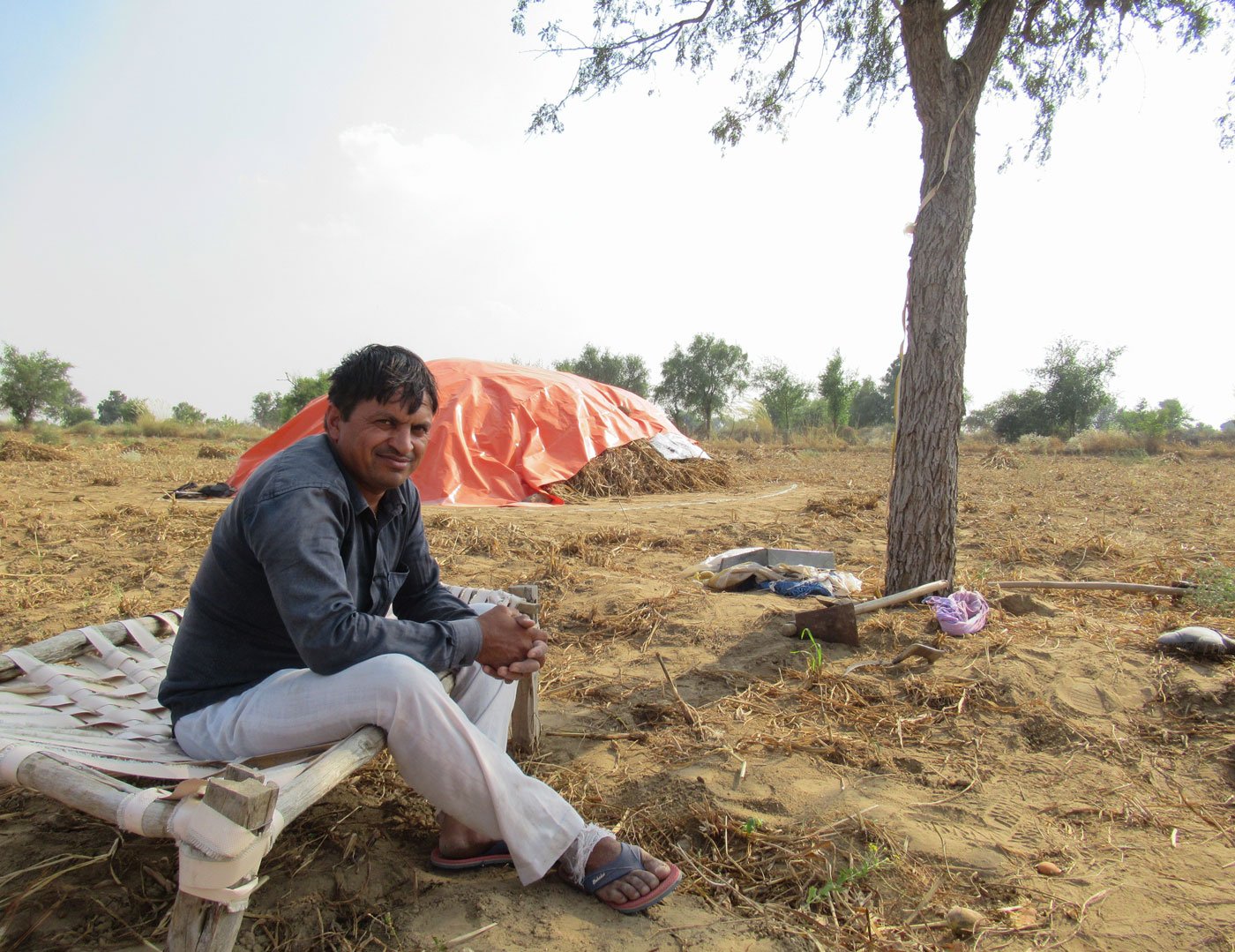
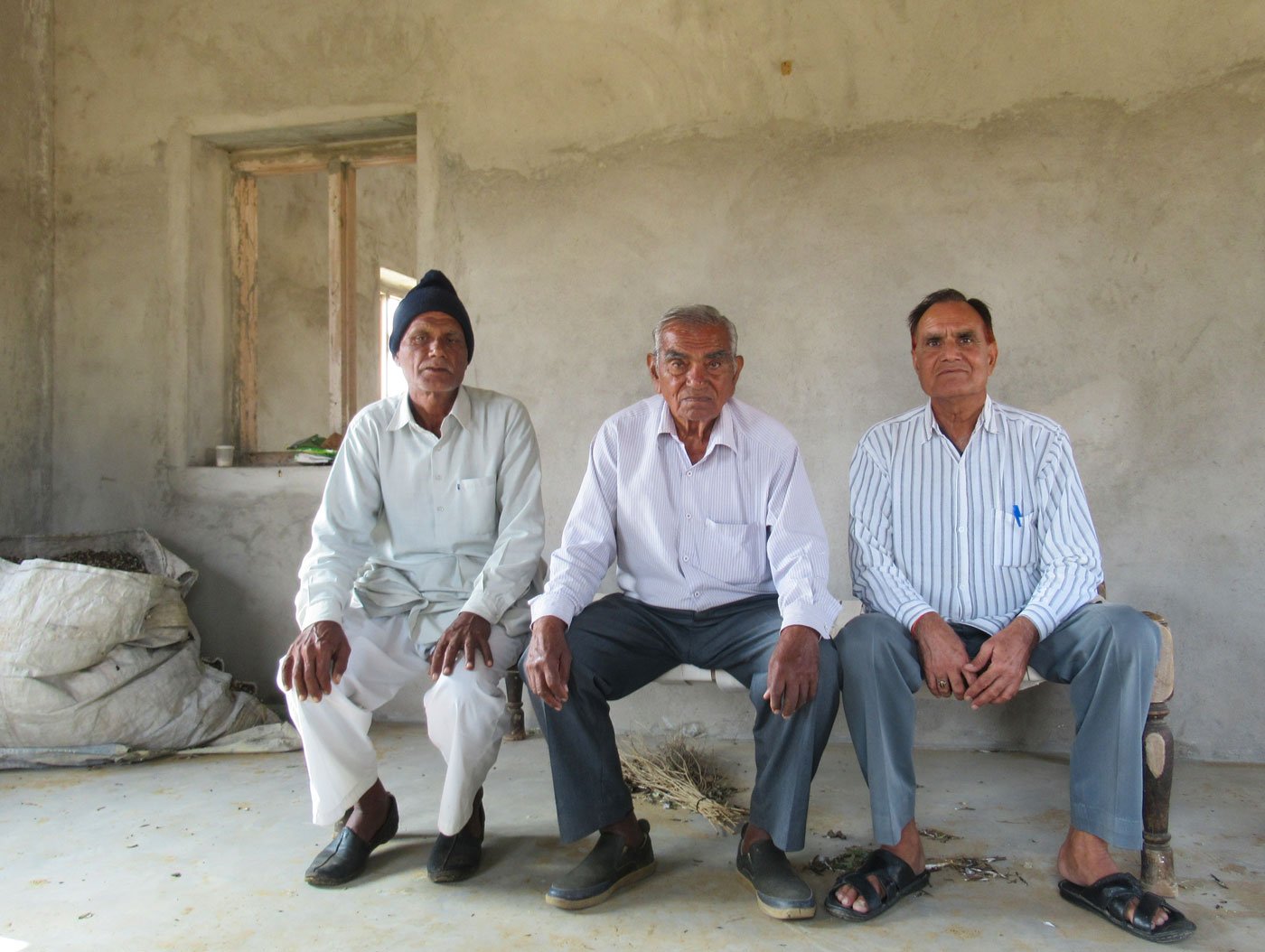
Left: Dharampal Saharan of Gajuvas village says, 'I am not sowing chana because there is no rain after September'. Right: Farmers in Sadinsar village speak of the changing weather – Raghubir Bagadiya (also a retired army captain), Narain Prasad (former high school lecturer) and Shishupal Narsara (retired school principal)
The RSAPCC also notes instances of extreme rainfall from 1951 to 2007. But, citing studies, it says overall rainfall is projected to decrease in the state and “evapo-transpiration to increase, due to climate change.”
The farmers of Churu have for long also depended on the post-monsoon drizzles in October and a few around January-February, which fed rabi crops such as groundnut or barley. These drizzles – “the Chakravat rain that came from the oceans between Europe and America, over Pakistan across the border” says Hardayalji – have mostly disappeared.
That rain also watered the chana crop – Taranagar was known as the country’s ‘ chana ka katora ’ (bowl), it was a matter of pride for farmers here, says Dularam. “The harvest used to be so good that we would pile the chana in heaps in the courtyard.” That bowl is now nearly empty. “After around 2007, I am not even sowing chana because there is no rainfall after September,” says Dharampal.
Churu’s chana crop would germinate well when temperatures started dropping by November. But over the years, even the winter here has changed.
*****
The RSAPCC report notes that after Jammu and Kashmir, the maximum number of cold waves in India has occurred in Rajasthan – 195 in nearly a century from 1901 to 1999 (it has no data on this after 1999). It notes that while Rajasthan shows warming trends for maximum temperatures, it is also seeing a cooling trend for minimum temperatures –like Churu's lowest minimum temperature of 4.1 degrees in the plains of India in February 2020.
Still, for many in Churu, winter is no longer what it used to be. “When I was a child (some 50 years ago), by early November we would have to use a razai [quilt]… I would wrap a blanket around myself when I came to the farm by 4 in the morning,” says Govardhan Saharan in Gajuvas village. Now, he says, sitting in his field of harvested barja amid khejri trees, “I wear a banian – it’s that warm even in the 11th month.”
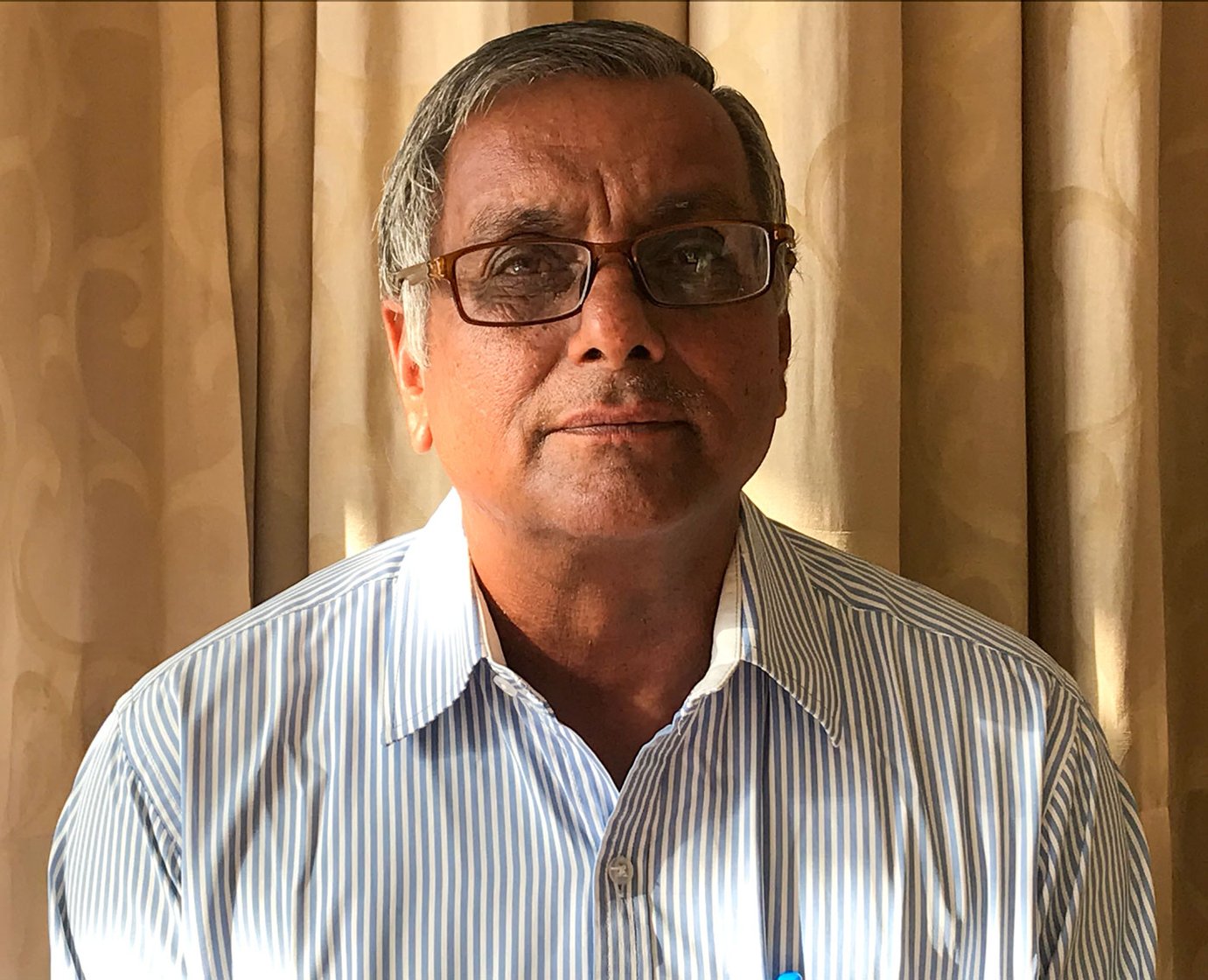
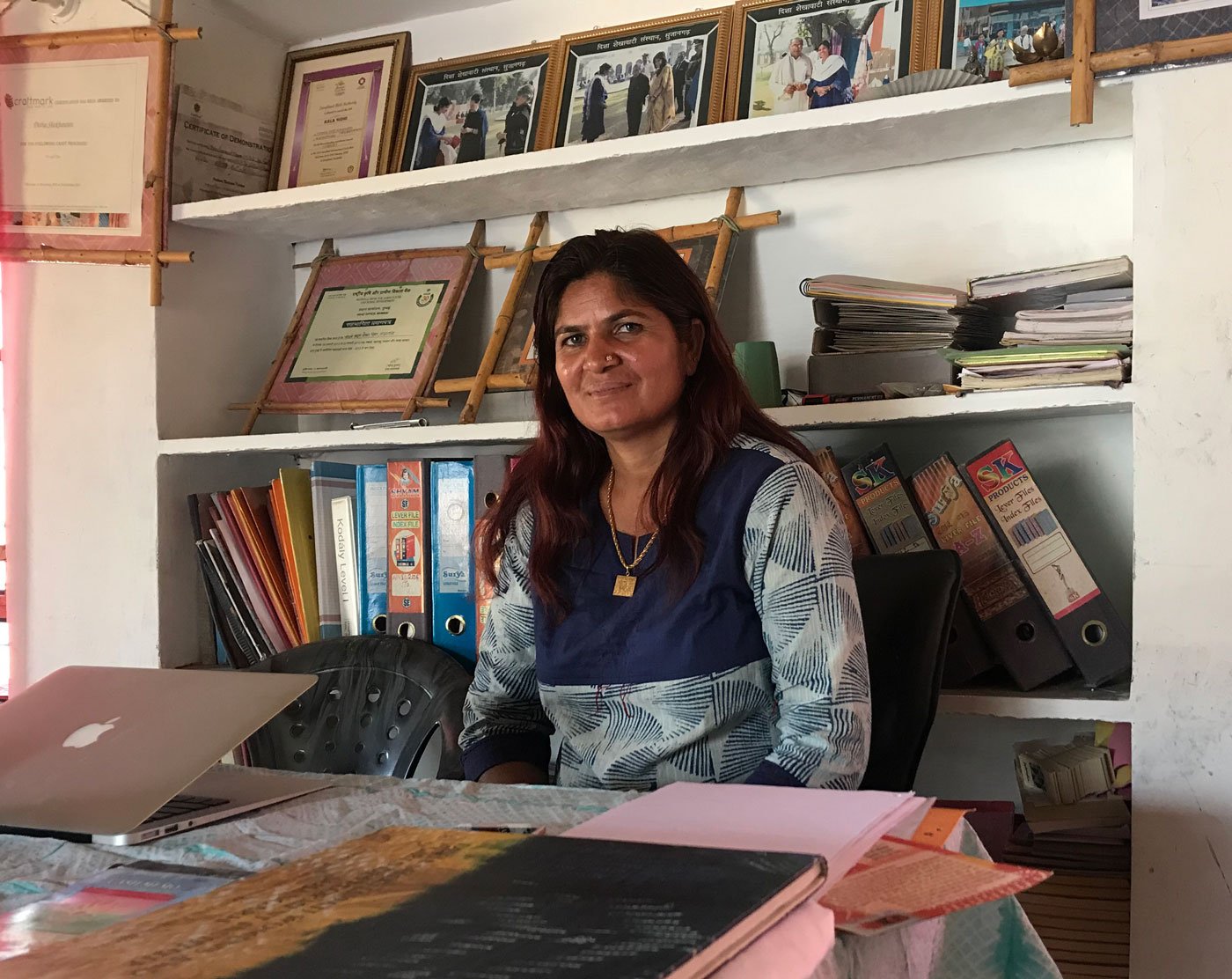
Prof. Isran (left) of Churu town says: 'The entire summer has expanded'. Amrita Choudhary (right) of the Disha Shekhawati organisation in Sujangarh says, 'Even in this hot region, the heat is increasing'
“In the past, when my organisation arranged an International Women’s Day event in March, we would still need sweaters,” says Amrita Choudhary. “Now we need fans. But all this is also very unpredictable from year to year.”
In Sujangarh town, anganwadi worker Sushila Purohit says, pointing to a small group of the 3-5 year old kids, “They were clothed for winter. But it is still hot in November. We are not sure what to advise them to wear.”
In Churu, 83-year-old Madhav Sharma, well-known columnist and writer, sums it up: “ Kambal aur coat ka jamaana chala gaya .” The days of blankets and coats (in November) are over.
*****
That expanding summer has swallowed up those kambal -coat days. “In the past, we had four distinct seasons [including spring],” adds Madhavji. “Now there is only one main mausam — a summer that lasts for eight months. This is a change of the very long term.”
“In the past, even March would still be cool,” says Nirmal Prajapati, farm activist in Tarangar. “Now even by end February sometimes the heat starts. And it extends to even October or beyond instead of till around August.”
Across Churu’s farms, Prajapati notes, the work hours have altered to adapt to this magnifying summer – farmers and labourers are trying to beat the heat by working during the relatively cooler early morning and early evening hours.
Besides, that extended heat is unrelenting. There was a time, some here recall, when an aandhi (sandstorm) whistled through villages almost every week and left behind a sheet of sand everywhere. Train tracks would get covered in sand, entire dunes would shift from place to place, a farmer sleeping in the courtyard would get covered too. “The westerly winds would bring the aandhi ,” recalls retired schoolteacher Hardayalji. “Sand would fill even our sheets. Now that kind of a andhi does not rage here.”
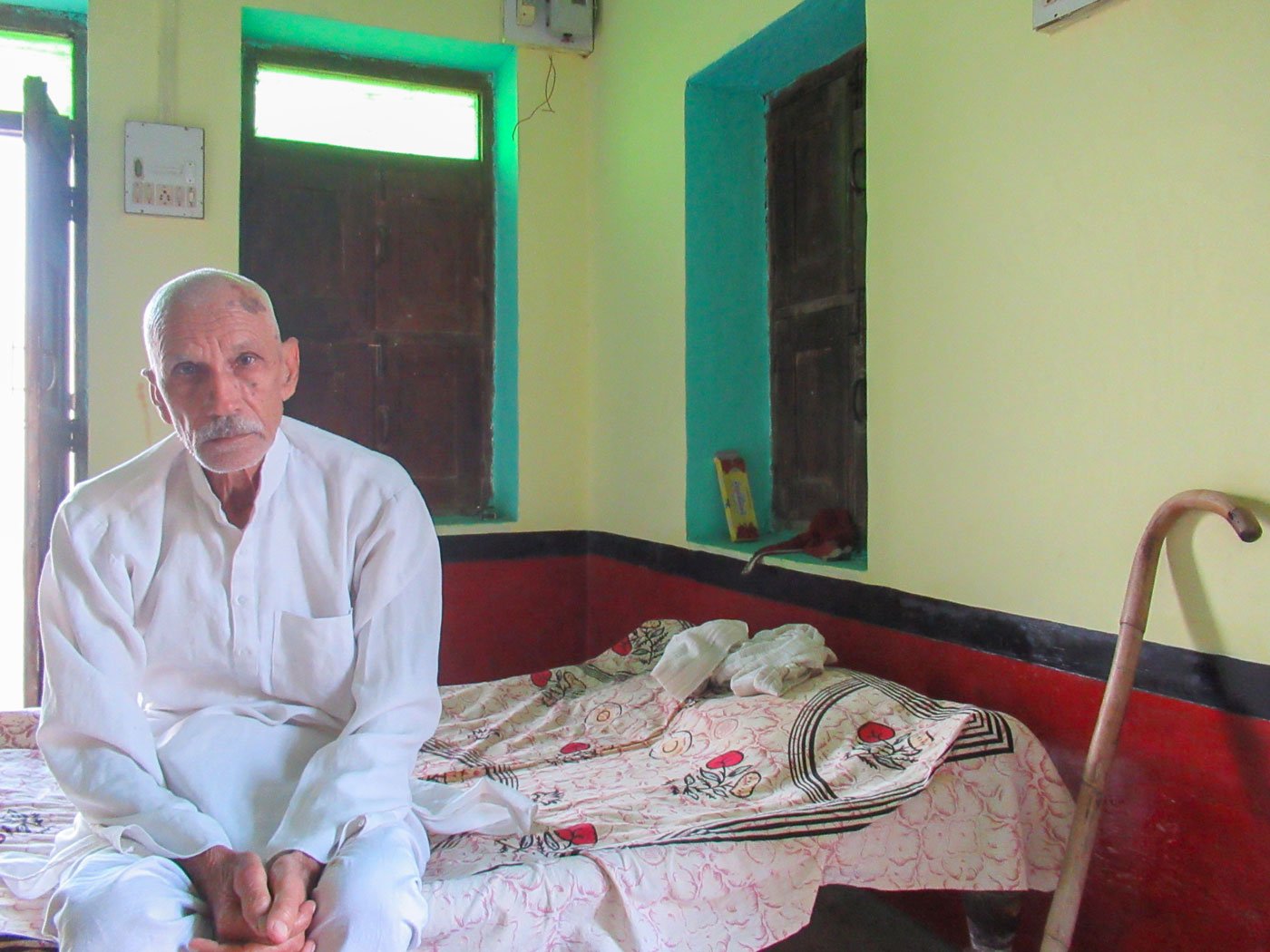
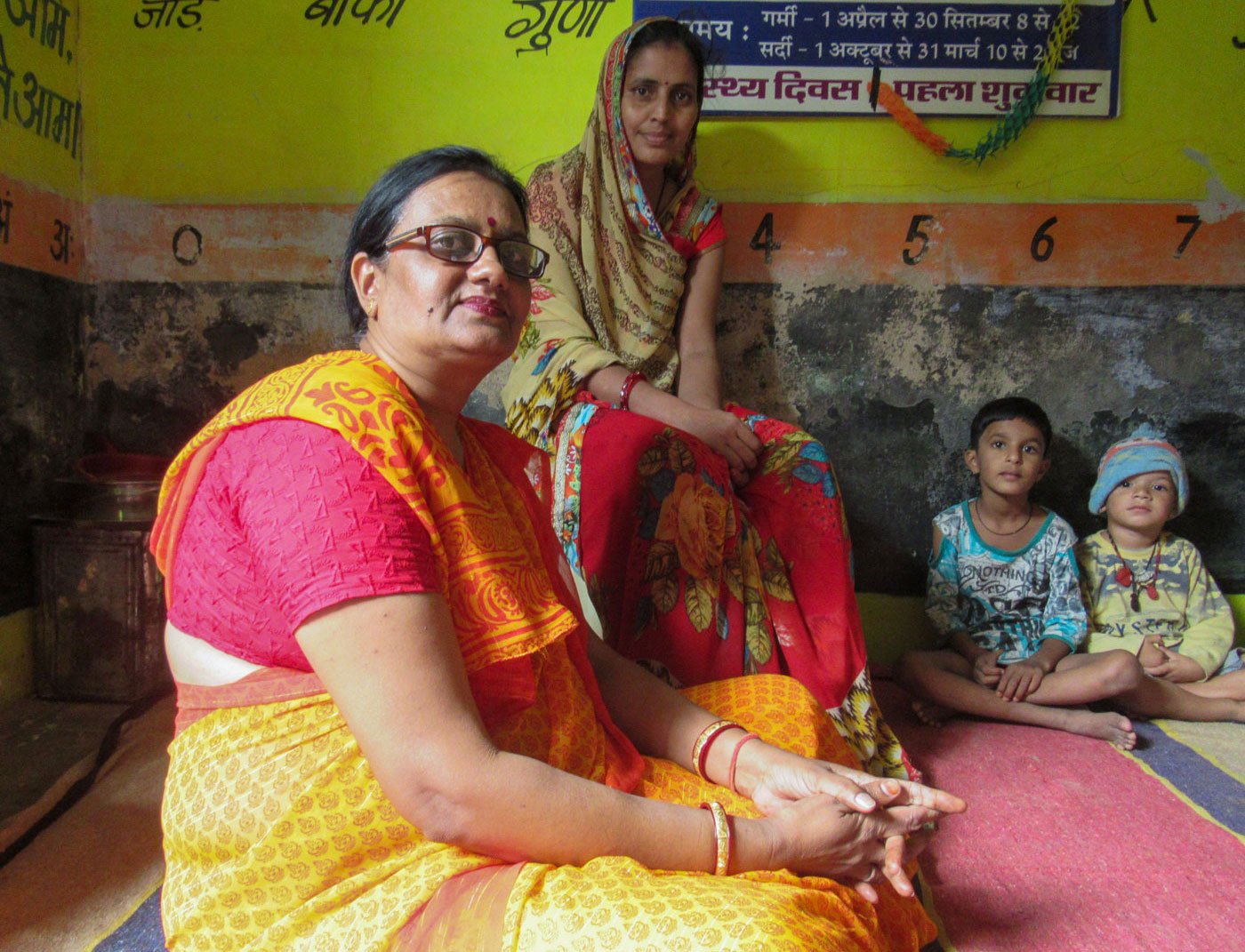
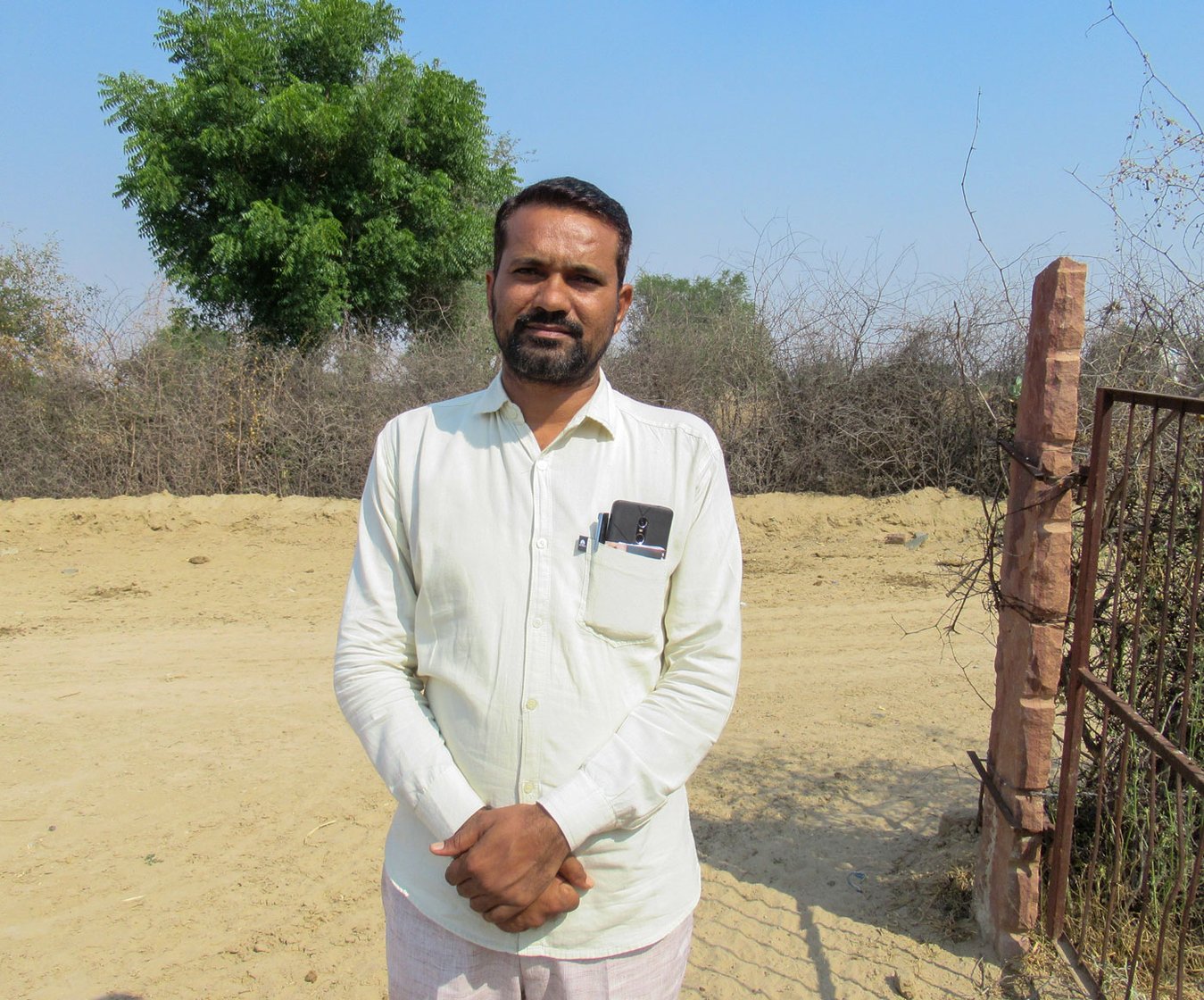
Left: The Chakravat drizzles have mostly disappeared, says Hardayalji Singh, retired teacher and landowner. Centre: Sushila Purohit, anganwadi worker in Sujangarh, says 'It is still hot in November. Right: Nirmal Prajapati, farm activist in Taranagar, says work hours have altered to adapt to the magnifying summer
These dust storms were often interspersed with the loo – a dry, hot and gusty wind – usually in the peak summer months of May and June, which would last for hours. Both the aandhi and the loo , when they were regular occurrences in Churu around 30 years ago – helped bring temperatures down, says Nirmal, “and the a andhi would deposit fine dust that helped soil fertility.” Now heat stays trapped, the mercury remains steady in the high 40s. “In April 2019, there was an a andhi I think after some 5-7 years,” he recalls.
That trapped heat prolongs the summer, making it more blistering. “In Rajasthan, we are used to hot summers,” says Umrao Singh, farm activist in Tarangar and Hardayalji’s son. “But for the first time ever, the farmer here has become scared of the heat.”
****
June 2019 was not the first time Rajasthan saw temperatures around or over 50 degrees Celsius. Churu climbed to a summer high of 49.8 in June 1993, show records of the Meteorological Centre, Jaipur. Barmer edged past that by 0.1 degrees in May 1995. Much earlier, Ganganagar had touched the 50-degree mark in June 1934, and Alwar hit 50.6 in May 1956.
Although some news reports called Churu the hottest place on the planet in early June 2019, other parts of the world – including some Arab states – have recorded 50 degrees Celsius temperatures or more, notes a 2019 report by the International Labour Organisation (ILO) . Depending on how global warming patterns evolve, the report, Working on a warmer planet , predicts a temperature increase for India of between 1.1 and as much as 3 degrees Celsius from 2025 to 2085.
For the entire desert region of western Rajasthan (19.61 million hectares), the Intergovernmental Panel on Climate Change and other
sources
have projected hotter days and warm nights, and a reduction in rainfall by the end of the 21st century.
“After around 48 degrees Celsius,” says Dr. Sunil Jandu in Churu town, even to people used to very high heat, “every rise by a degree matters a lot.” The impact of 48-plus degrees on the human body, he says, is huge – exhaustion, dehydration, kidney stones (due to long-term dehydration) and even heat stroke, besides nausea, dizziness and other effects. However, Dr. Jandu, who is district reproductive and child health officer, says he noticed no increase in such cases in May-June 2019. Nor were any heat-wave related deaths reported in Churu at that time.
The ILO report too notes the dangers of extreme heat: “The rise in global temperatures caused by climate change will also make… heat stress more common… heat received in excess of that which the body can tolerate without suffering physiological impairment… Exposure to excessive heat levels can lead to heatstroke, sometimes even with a fatal outcome.”
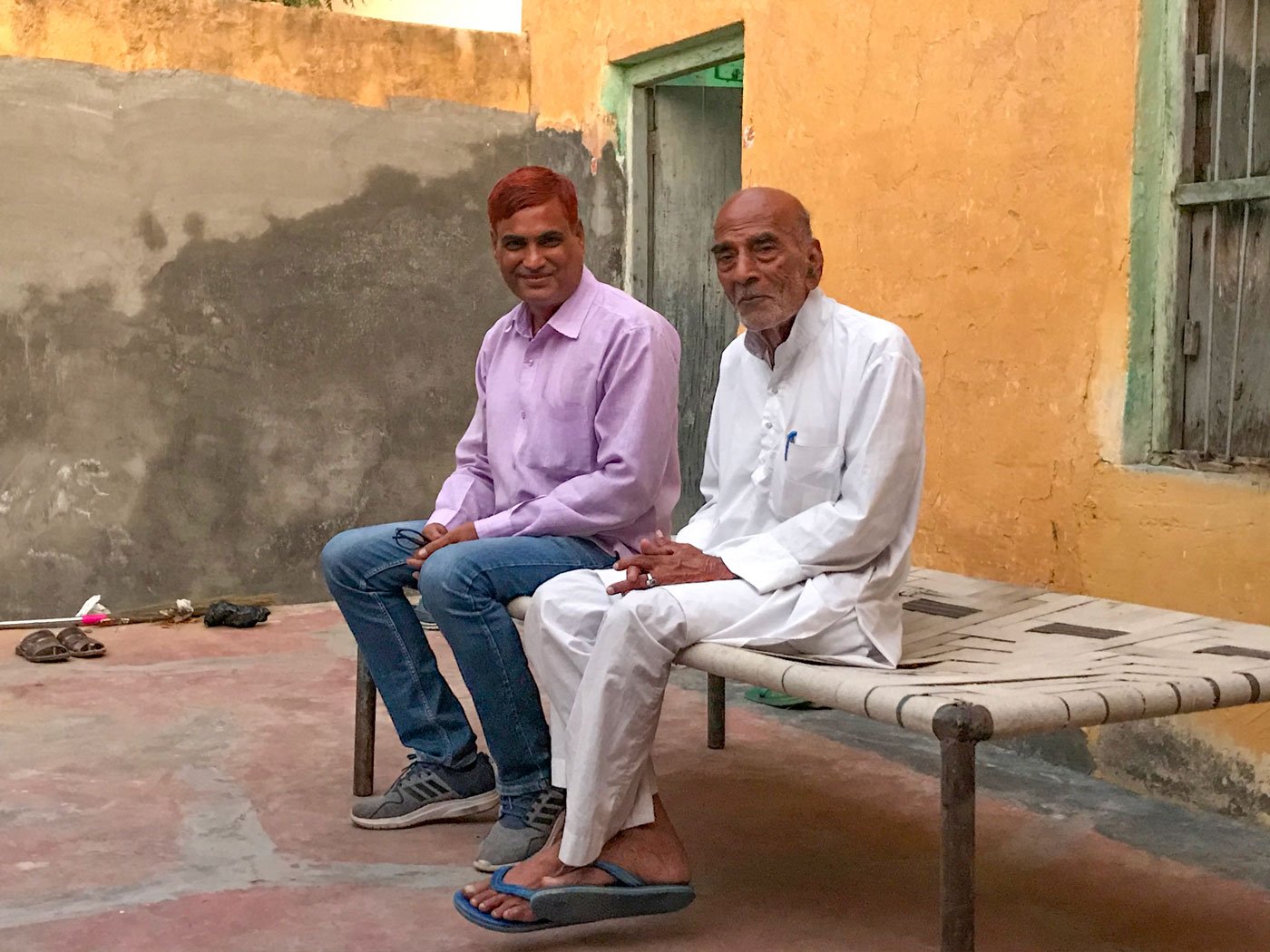
Writer-farmer Dularam saharan (left) of Bharang village at the house of well-known veteran columnist Madhavji Sharma, in Churu town: 'Kambal aur coat ka jamaana chala gaya'
Southern Asia, the report says, is among the regions expected to be the worst affected over time, and countries most affected by heat stress usually have higher rates of poverty, informal employment, and subsistence agriculture.
But not all damaging effects are of a kind seen so soon, so easily, in dramatic fallouts such as a rush to the hospitals.
Combining with other problems, the ILO report notes, heat stress may also act as a “push factor prompting agricultural workers to leave rural areas…[and] during the 2005–15 period, higher levels of heat stress were associated with larger outmigration flows – a trend not observed for the preceding ten-year period. This may well be a sign that households are increasingly taking climate change into account in their migration decisions [emphasis added]."
In Churu too, falling incomes due to falling yields – partly due to the now-erratic monsoon – are among the long chain of forces that drive migration. In the past, says Dularam Saharan, ‘We would get 100 mann [about 3,750 kilos] bajra from our land. Now it’s 20-30 mann at most. In Bharang, my village, maybe only 50 per cent are still cultivating, the rest have left farming and migrated.”
In Gajuvas village, Dharampal Saharan says his yields too have fallen sharply. So for some years now he has been going to Jaipur or to cities in Gujarat for 3-4 months annually, to work as a tempo driver.
Prof. Isran too notes that across Churu, to compensate for the loss of falling farm incomes, many are migrating to the Gulf countries or to cities in Karnataka, Maharashtra and Punjab to work in factories. (The trade in cattle being devastated by government policy is also a reason for this – but that’s another story.)
The world could see “a productivity loss equivalent to 80 million full-time jobs” due to high temperatures in the next 10 years, says the ILO report. That is, if global temperatures rise even by 1.5° C by the end of the twenty-first century, as presently projected.
*****
Why is the climate changing in Churu?
Environmental pollution, says Prof. Isran, as does Madhav Sharma. That traps heat, alters weather patterns. “The heat is more because of global warming and because of concretisation. Forests have decreased, vehicles have increased,” says Ramswaroop Saharan, farmer and former school principal in Bhaleri village of Tarangar tehsil .
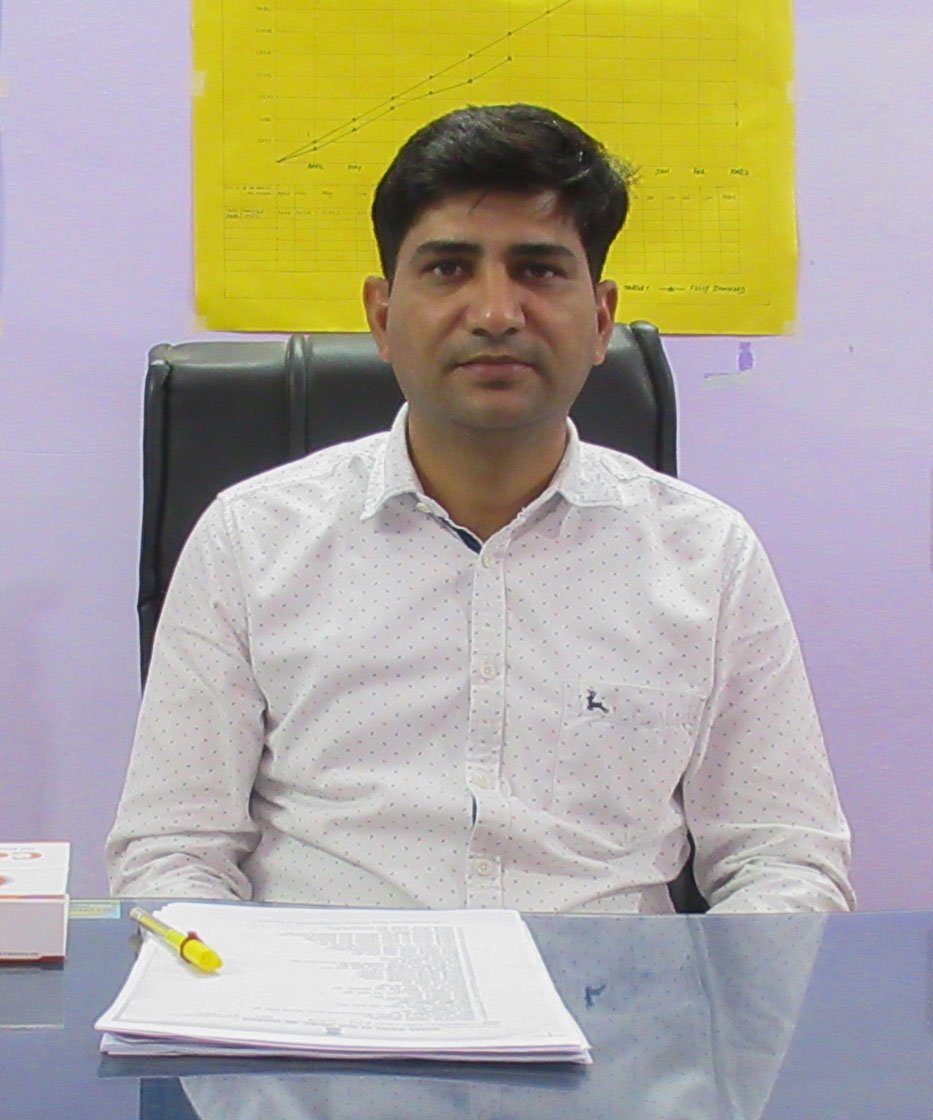
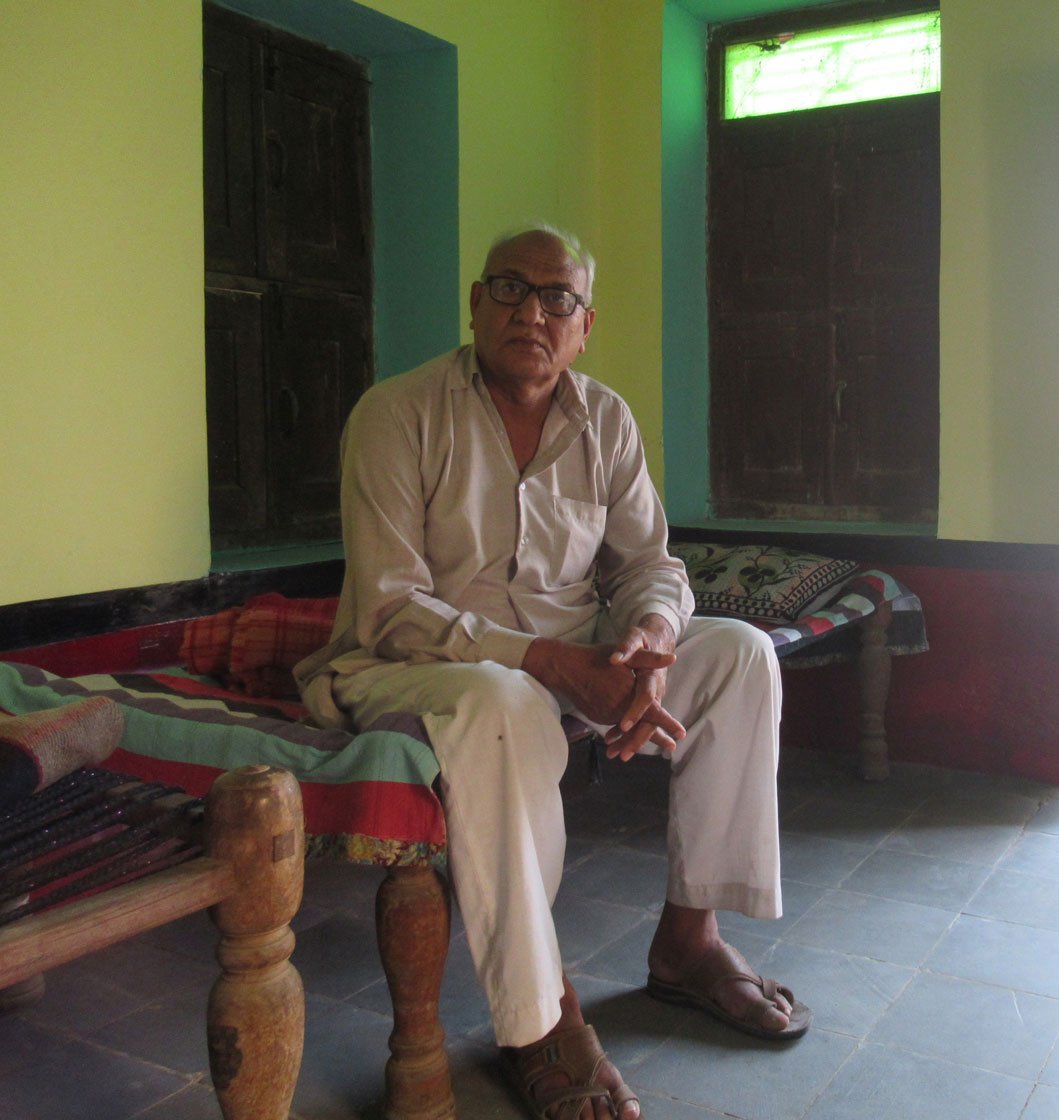
'After around 48 degrees Celsius,” says Dr. Sunil Jandu (left) in Churu town, even to people used to very high heat, 'every rise by a degree matters a lot'. Ramswaroop Saharan of Bhaleri village attributes the growing heat to global warming
“Industry is growing, air-conditioner use is growing, cars are growing,” says Narayan Bareth, a senior journalist based in Jaipur. “The environment is polluted. All this adds to global warming.”
Churu, called the ‘gateway to the Thar desert’ in some accounts, is of course just one link in a larger global chain of climate change. The Rajasthan State Action Plan on Climate Change discusses the growth of greenhouse gas emissions globally after 1970. It focuses on nationwide factors, beyond just Rajasthan, that feed into the larger scale GHG-driven changes. Many of these arise in greater activity in the energy sector, increased use of fossil fuels, emissions in the agriculture sector, growing industrial processes, and due to ‘land-use, land-use change and forestry’. All these are ever-shifting links in the complex web of climate change
In Churu’s villages, people may not speak of GHGs, but they are living through the effects. “In the past, even without fans and coolers, we could handle the heat. But now we cannot live without them,” says Hardayalj.
Adds Amrita, “Poor families cannot afford fans and coolers. Unbearable heat brings diarrhoea and vomiting (among other effects). And going to the doctor adds to their expenses.”
Before taking the bus home in Sujangarh, at the end of a day in the field, Bhagwani Devi says, “It is difficult to work in the heat. We feel nauseous, dizzy. Then we rest in the shade of a tree, have some lime water – and get back to work.”
With sincere thanks for their generous help and guidance: Narayan Bareth in Jaipur, Nirmal Prajapati and Umrao Singh in Taranagar, Amrita Choudhary in Sujangarh, and Daleep Sarawag in Churu town.
PARI’s nationwide reporting project on climate change is part of a UNDP-supported initiative to capture that phenomenon through the voices and lived experience of ordinary people.
Want to republish this article? Please write to [email protected] with a cc to [email protected]
